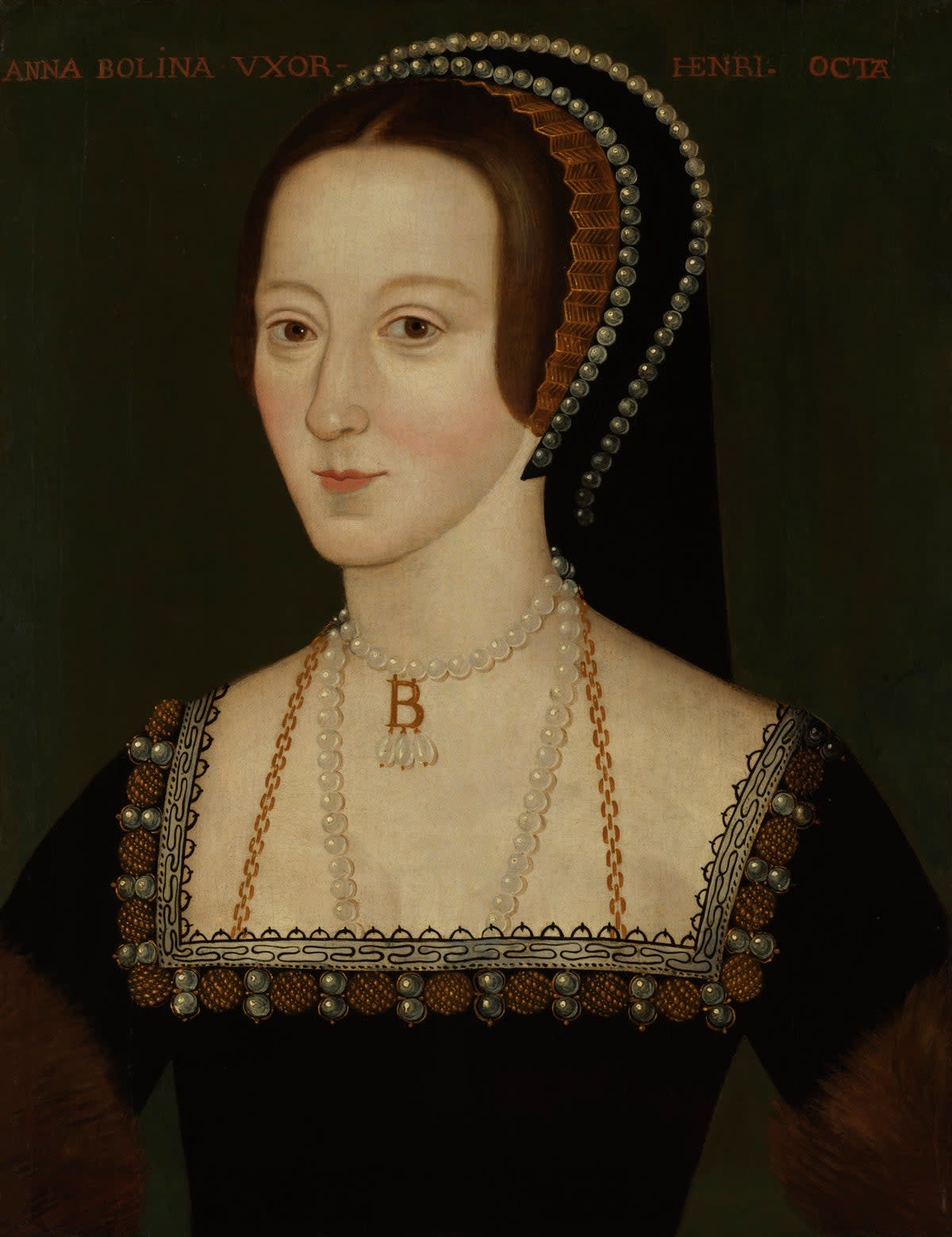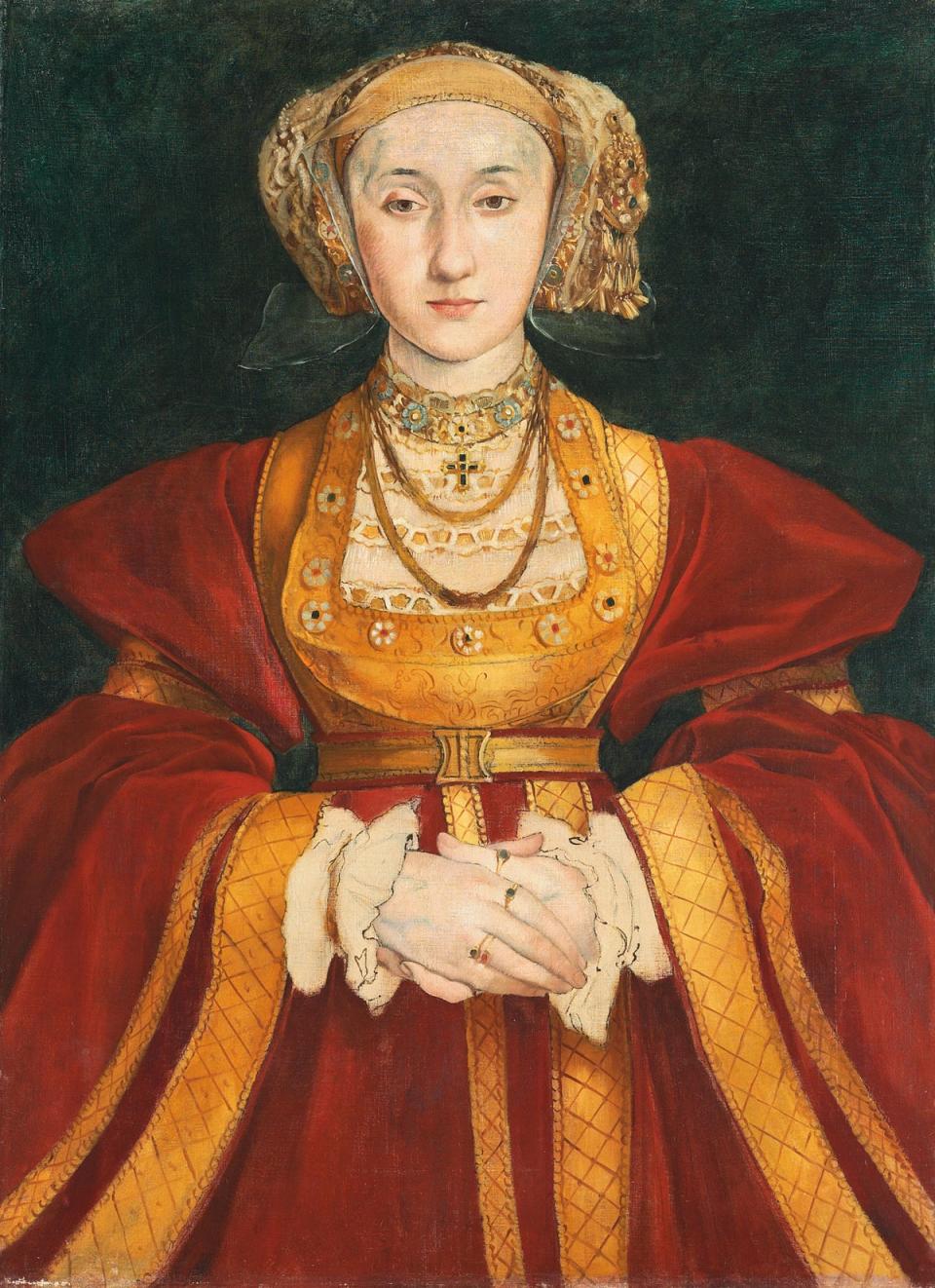Six Lives at the National Portrait Gallery review: Henry VIII still looms large in this celebration of his wives

We’ve had Six the Musical; welcome to Six Lives, the exhibition on the six wives of Henry VIII. Forget “Divorced, beheaded, died”, as with the West End show, here the women are presented in their own right.
A display of names starts the show, with each given her own identity. Katherine of Aragon is “Diplomat” (really?); Anne Boleyn, “Reformer” (her motto “The Most Happy” doesn’t read well); Anne of Cleves, “Landowner” (not the first thing you think about her); Jane Seymour, “Patron” (eh?); Katherine Howard, “Intercessor” (floozie); Katherine Parr, “Regent”.
So off we go on the difficult journey of trying to present each wife in the most positive light. The most striking images are at the outset, with contemporary photographs of the waxworks in Madam Tussaud’s by Hiroshi Sugimoto.
But for psychological insight there’s nothing to beat the drawings of the court by Hans Holbein: there are a few here. There are some moving letters from the queens, including a terrifying letter from doomed Katherine Howard, and some of their books. All the familiar images are here, and some less familiar.
The trouble about trying to make each of the queens feisty and interesting is that some were (the first and last Katherines), some weren’t (Anne of Cleves).

Katherine of Aragon was the most formidable; daughter of that very tough nut, Isabella of Castile – shown here. Katherine, of whom we see several images, was sent young to England to marry Henry’s brother Arthur (he looks nicer than Henry) but she never lost the bloodymindedness of her line in not conforming to Henry’s will, which would have broken a weaker woman.
Anne Boleyn was proto-Protestant – though you wouldn’t know it from her books of hours – but her genius was in not sleeping with Henry like her sister Mary, but holding out for marriage.
She was the stepmother from hell for Mary Tudor but you don’t get a sniff of that. What you do get are portraits of Thomas More and Thomas Cromwell, who both detested her; pity they weren’t put face to face, as in the Frick.
Little Jane Seymour is here but even Holbein couldn’t make her anything but decent and dumpy. The fatal portrait of Anne of Cleves was also Holbein’s – as Six the Musical puts it, “You said that I tricked ya / ‘cause I didn’t look like my profile picture” – in a copy by Degas.
There’s a sinister paucity of images of poor Katherine Howard, though we get her ghastly uncle, the Duke of Norfolk. Finally there’s nice, clever Protestant Katherine Parr, plus her stepchildren, to whom she was a mother.
The most powerful presence is, alas, Henry himself. One of his suits of armour is here, big, with a ridiculously protuberant codpiece. He made and unmade queens… a monster.
National Portrait Gallery, June 20 to September 8 npg.org.uk

 Yahoo News
Yahoo News 
